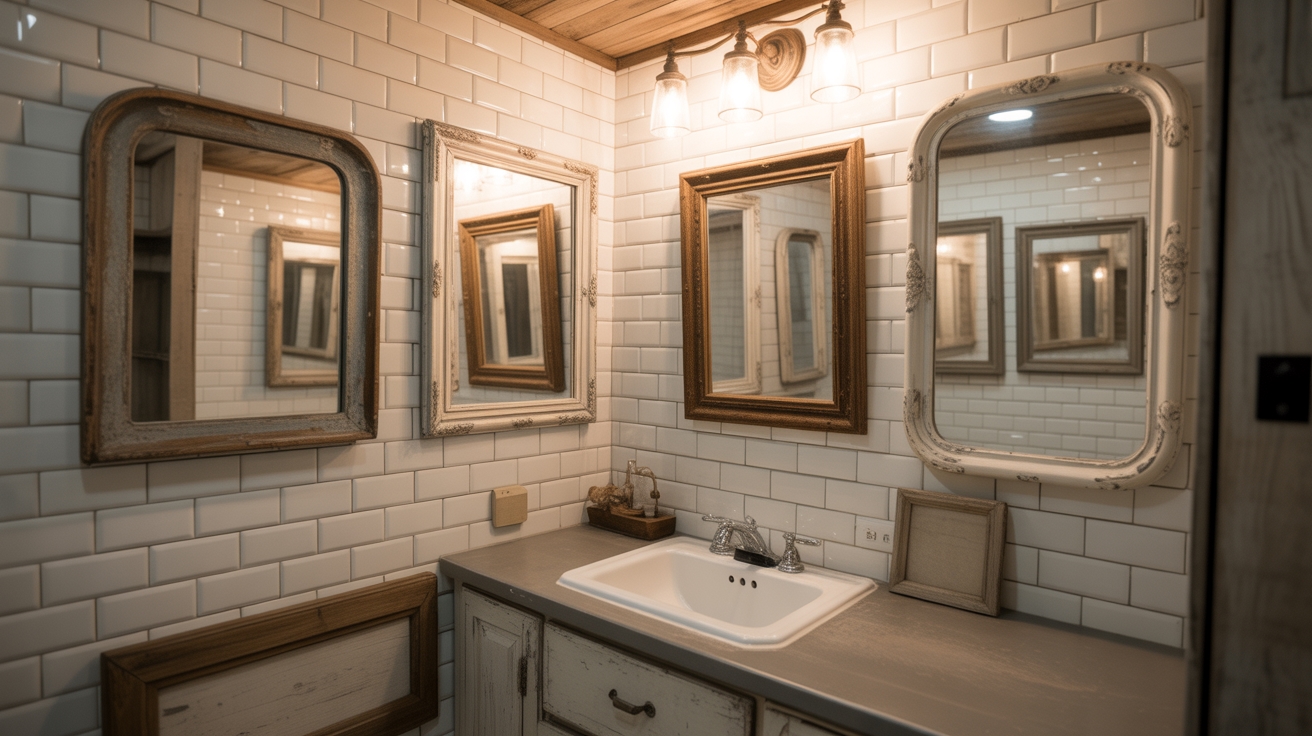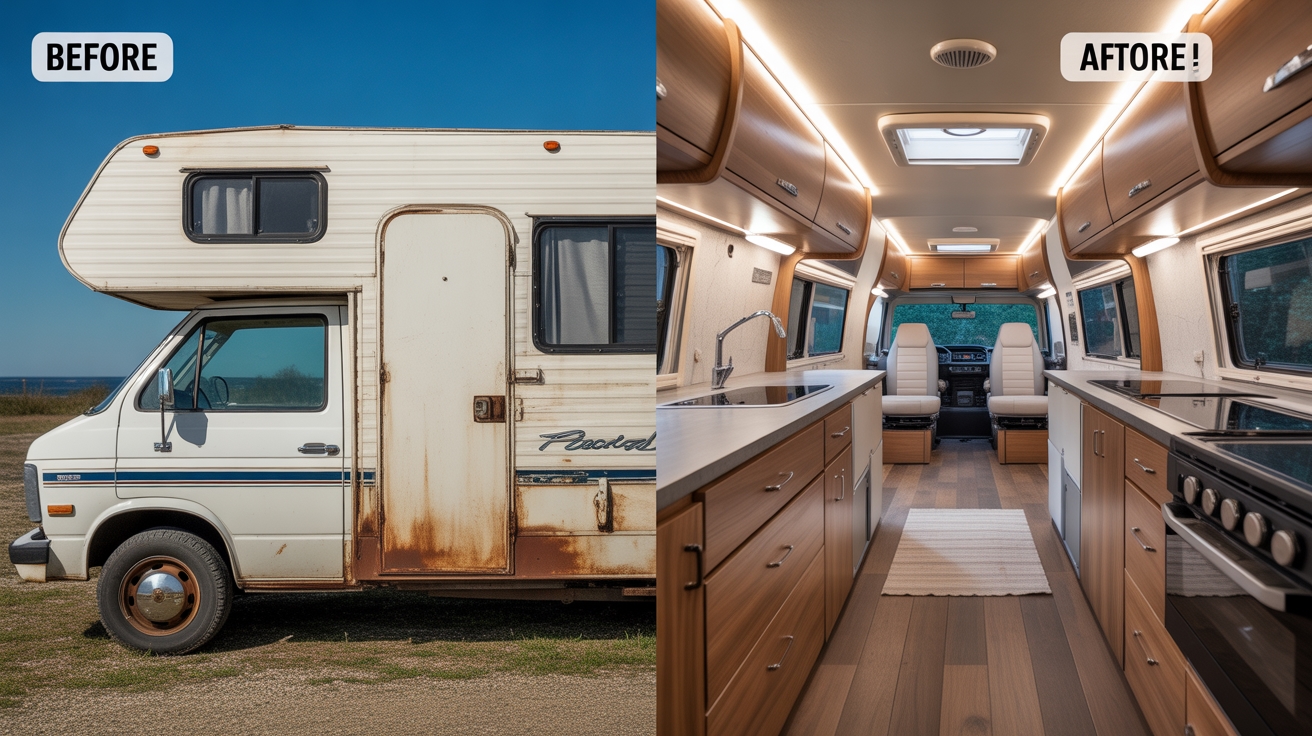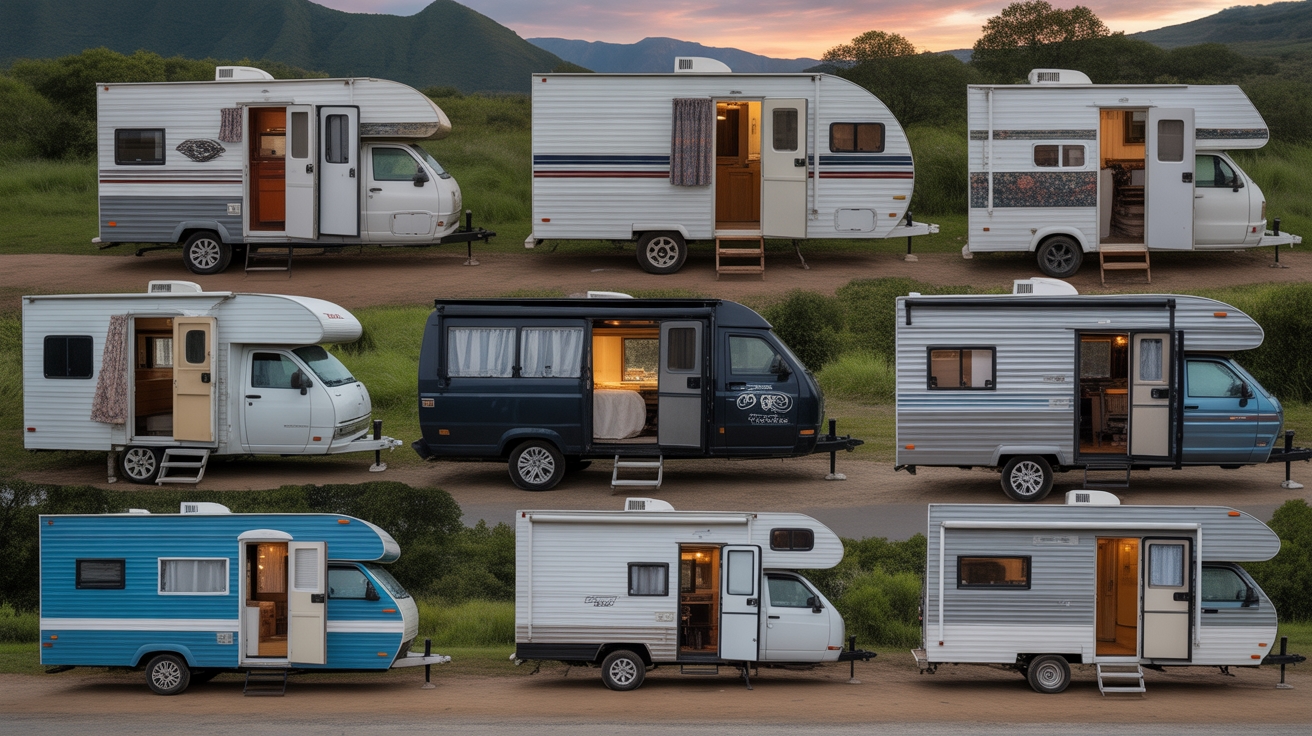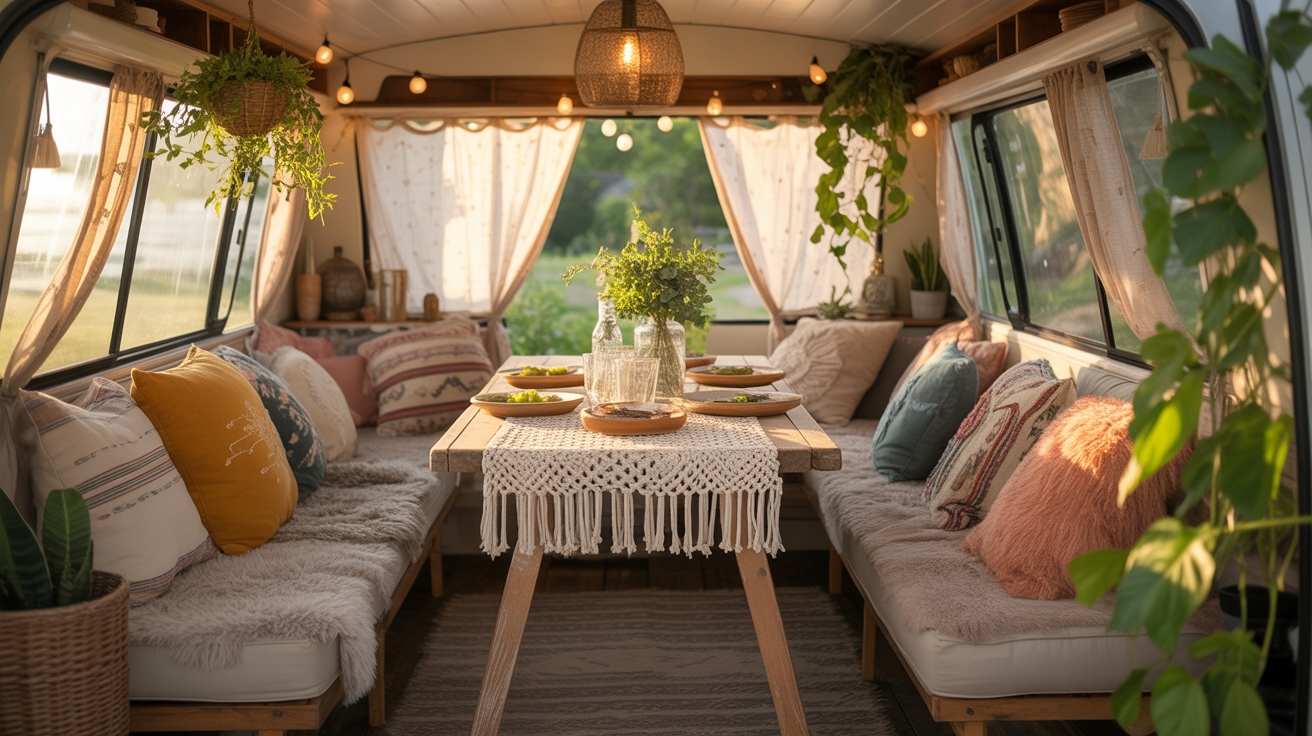Like a puzzle where every piece must fit perfectly, decorating your tiny camper requires careful planning and attention to detail.
You’ll need to make smart decisions about space utilization, color choices, and storage solutions to create a comfortable living environment.
Whether you’re a weekend warrior or full-time nomad, avoiding common decorating pitfalls can mean the difference between a cramped quarters and a cozy haven. Let’s explore the vital mistakes you won’t want to make.
Overlooking Natural Light Opportunities
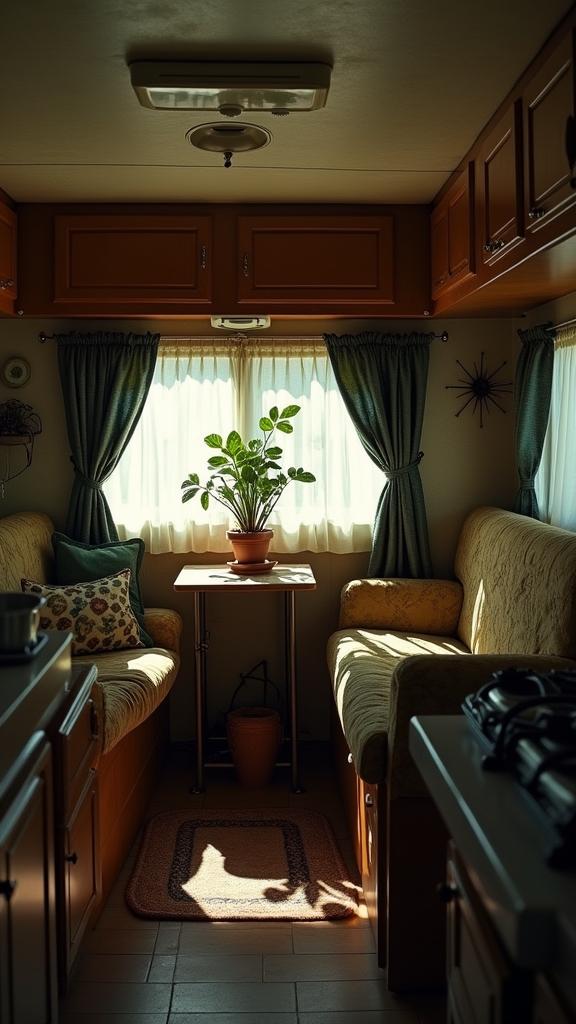
When designing your tiny camper’s interior, maximizing natural light should be your top priority, as it’s one of the most effective ways to make your limited space feel more expansive.
Positioning your RV to face the morning sun can significantly enhance interior brightness throughout the day.
Consider installing larger windows with UV-protected glass, and opt for light-colored window coverings that allow sunlight to filter through.
Using blinds that open will provide quick and convenient control over the amount of daylight entering your space.
SEE THIS: How I Turned a Dated Camper Into a Pinterest Dream!
Choosing Dark Paint Colors for Walls
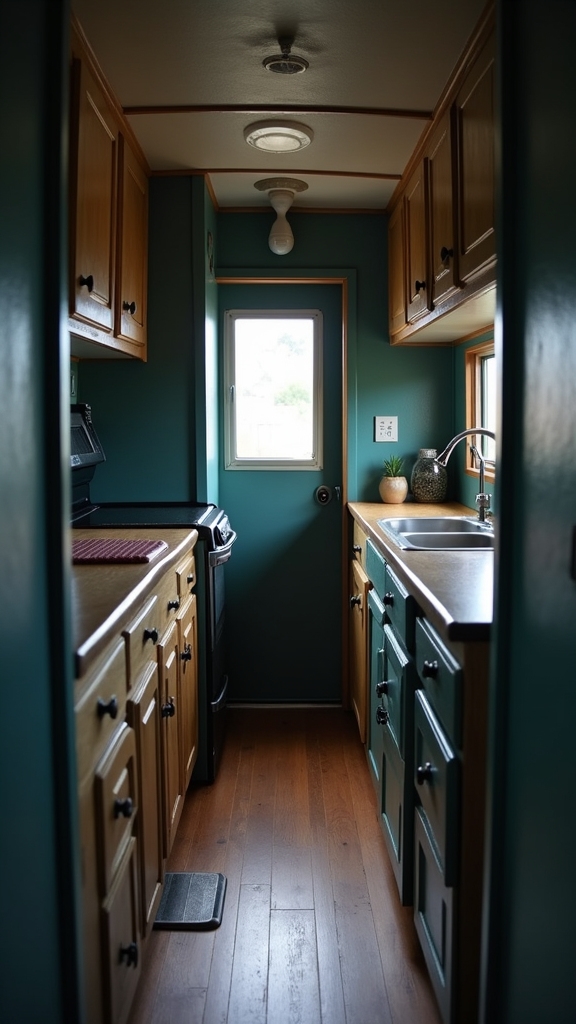
Although dark paint colors might seem dramatic and sophisticated, they can considerably diminish the perceived size of your tiny camper’s interior space.
Dark walls absorb precious natural light and make it harder to highlight architectural details or decorative elements. Dark paint also creates a heavier atmosphere that can feel oppressive in small spaces.
Plus, they’ll increase heat absorption and maintenance costs, while potentially affecting your camper’s resale value down the road.
SEE THIS: 15 Jaw-Dropping Before & Afters of DIY Camper Decorating Ideas!
Failing to Maximize Vertical Storage Space

When you overlook overhead storage options or fail to utilize wall space effectively, you’re missing out on valuable storage opportunities.
Standard shelf heights should be carefully considered to maintain functionality and easy access during your build. Install floating shelves, use adhesive hooks, and consider multi-functional furniture to maximize every inch of vertical space in your camper.
Try adding a wall-mounted soap dispenser in your bathroom to create extra counter space while keeping essentials within reach.
SEE THIS: 23 Amazon Camper Accessories That Are Actually Genius!
Poor Lighting Fixture Placement
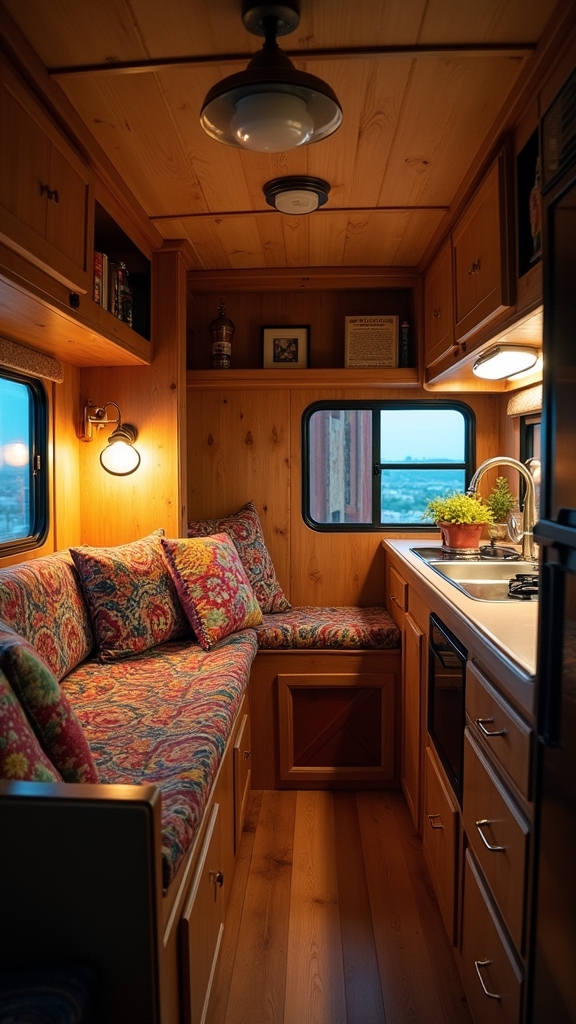
You’ll want to avoid direct overhead lighting without diffusion, which creates harsh shadows and eye strain. Instead, position your fixtures strategically, considering task areas and natural light sources.
Don’t forget to incorporate dimmable options for flexible lighting control throughout the day. Consider mounting LED strip lights under cabinets or along ceilings to provide ambient illumination while preventing heat buildup in enclosed spaces.
Neglecting Moisture Control in Bathroom Areas
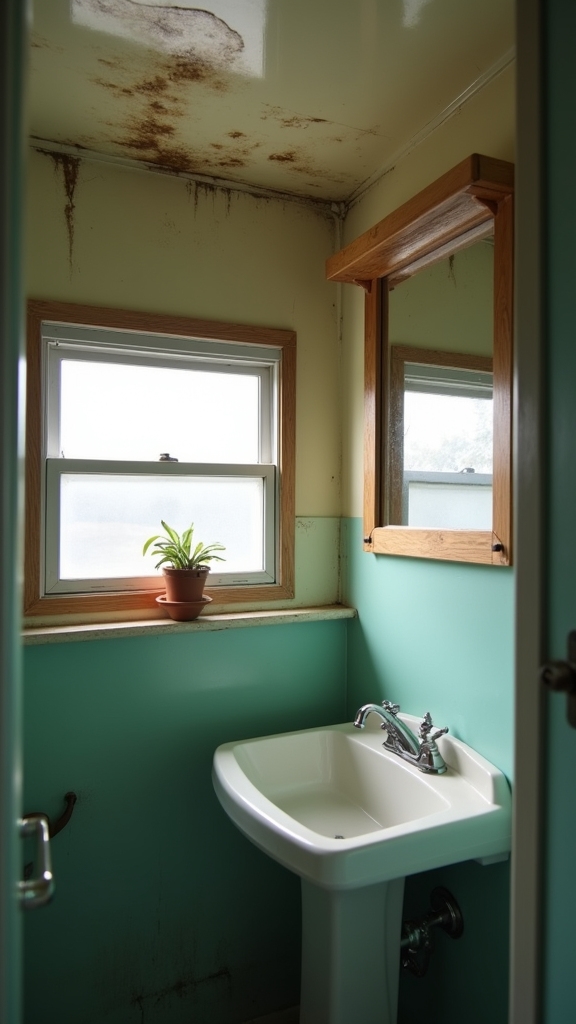
You’ll need to be proactive with ventilation strategies, like installing solar-powered exhaust fans and using moisture absorbers.
Don’t forget to establish good habits, such as keeping the bathroom door closed during use and regularly monitoring humidity levels to prevent mold and structural damage.
Cluttering Countertops and Tables
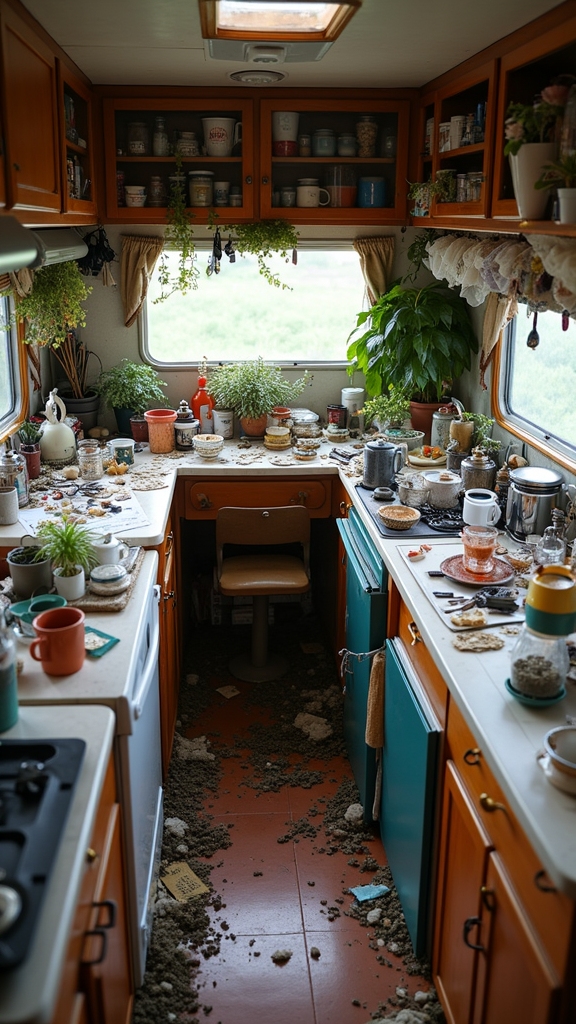
One of the biggest challenges in tiny camper living is managing limited counter and table space effectively.
When you allow surfaces to become cluttered with cooking utensils, devices, and random items, you’ll find yourself struggling with meal prep and daily tasks.
Install hooks, magnetic strips, and drawer organizers to keep essentials tucked away, and always return items to their designated spots immediately after use.
Using Bulky Furniture Pieces
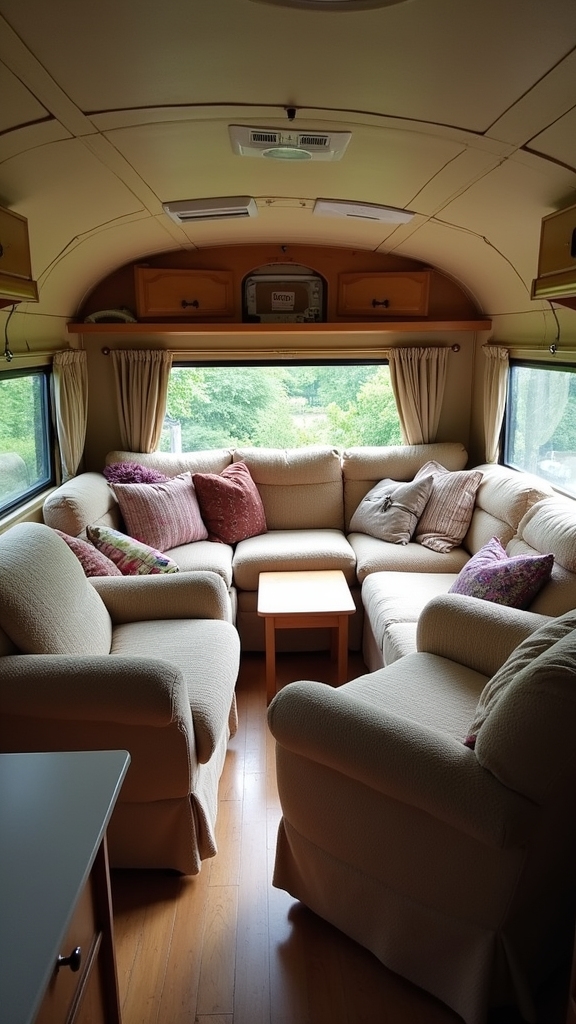
Beyond cluttered countertops, bulky furniture can quickly transform your tiny camper from a cozy retreat into an impractical living space.
Instead, focus on lightweight, multi-functional pieces that maximize your limited square footage. Choose compact furniture that’s proportionate to your camper’s dimensions, and opt for modular designs that can be easily reconfigured to suit your changing needs.
Ignoring Multi-Functional Storage Solutions

Smart storage solutions can make or break your tiny camper’s livability, yet many owners overlook the potential of multi-functional storage options.
Don’t waste precious space with single-purpose items when you can incorporate transformative furniture, stackable containers, and modular components.
Consider pull-out drawers under your bed, foldable tables that double as workspaces, and seating with built-in storage compartments.
Skipping Regular Maintenance Checks

Don’t overlook important inspections of your roof sealants, electrical systems, and plumbing components.
You’ll want to check tire pressure regularly, maintain your battery’s charge, and guarantee your hitch is properly lubricated.
Overcrowding With Decorative Items
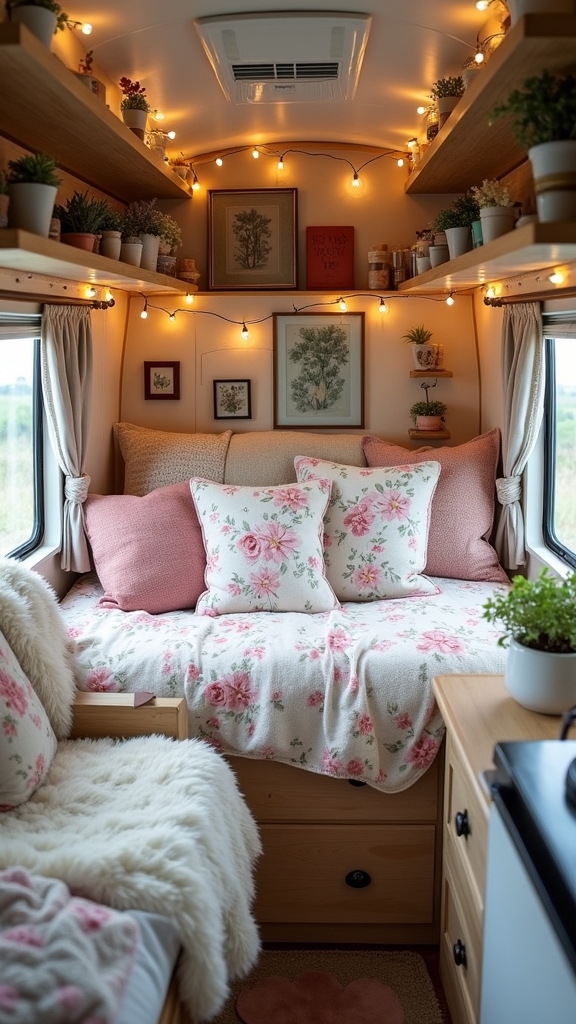
I would avoid overcrowding with unnecessary décor that adds weight and clutters valuable surfaces. Instead, select small-scale, multi-functional pieces that serve both aesthetic and practical purposes.
Consider using organized storage solutions and regularly assess which decorative items truly enhance your camper’s livability.
Mismanaging Window Treatments
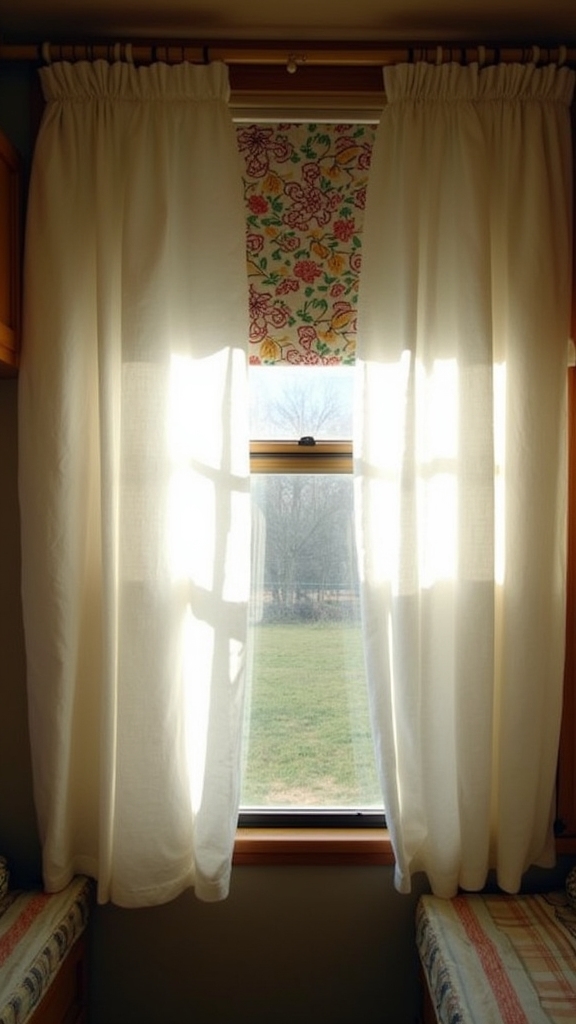
Don’t make common mistakes like using oversized curtains that overwhelm your space or installing heavy hardware that damages walls.
Instead, opt for lightweight, properly sized treatments that coordinate with your décor, and use damage-free mounting solutions like command hooks.
Selecting Non-Durable Materials
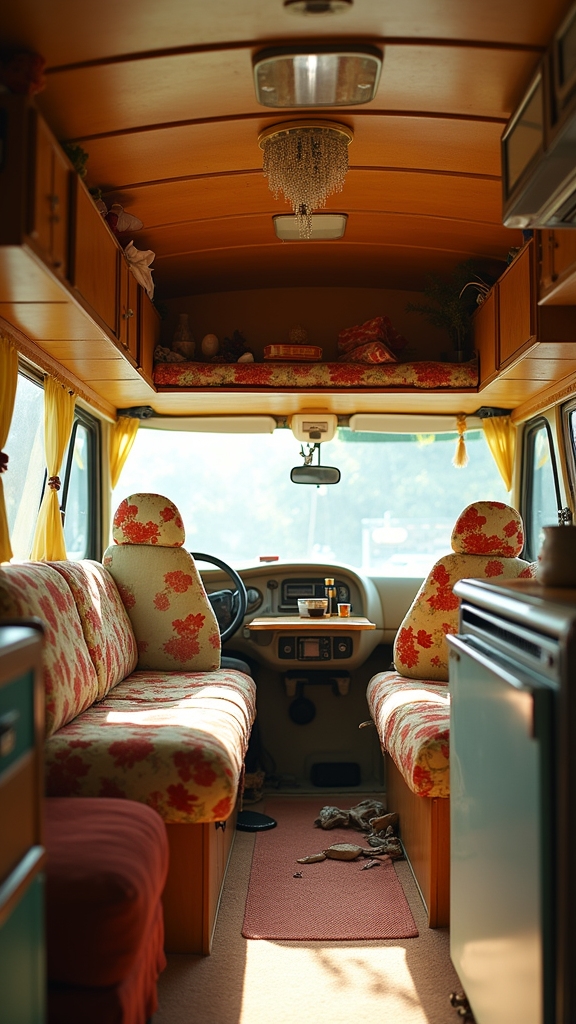
When selecting interior and exterior materials, you’ll want to avoid untreated canvas, standard plywood, and uncoated aluminum, which can quickly deteriorate from moisture and UV exposure.
Instead, opt for marine-grade wood, fiberglass, or properly sealed aluminum for exterior surfaces, and water-resistant materials for interior spaces.
Disregarding Door Storage Potential
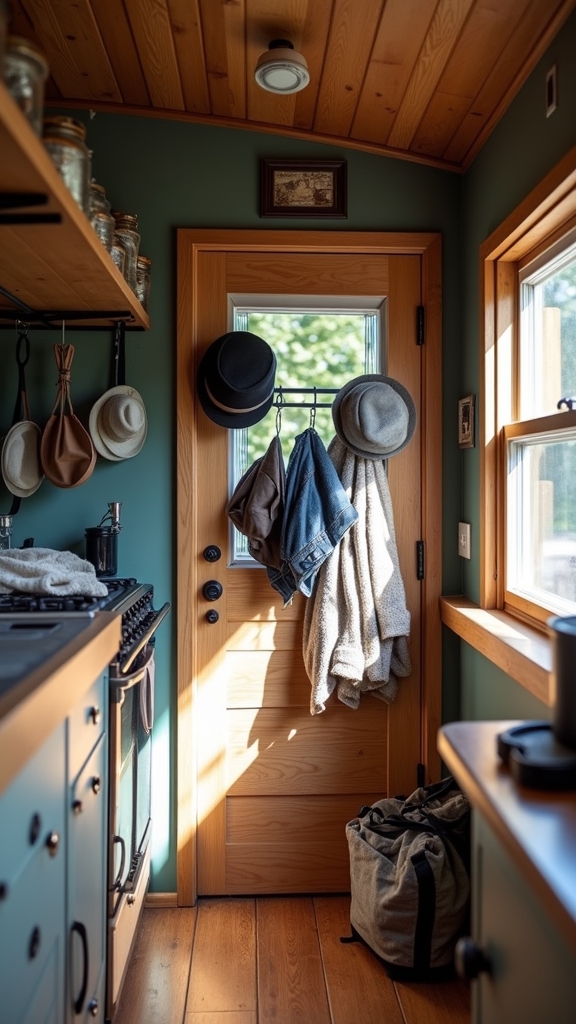
In the quest for efficient storage, many camper owners overlook one of their most valuable assets: the doors.
You’ll find untapped potential in recessed areas, magnetic strips, and over-the-door organizers. Consider installing custom shelving near doorways or adding adhesive hooks for smaller items.
With the right approach, your doors can transform from simple barriers into practical storage solutions.
Creating Inefficient Traffic Flow
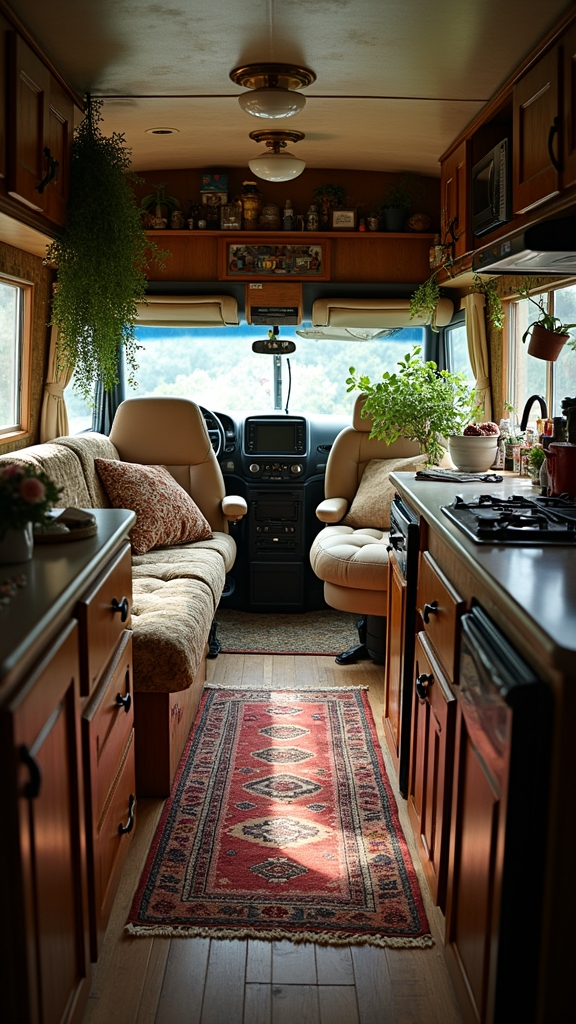
When planning your layout, make certain pathways are wide enough for comfortable movement, and avoid placing furniture that blocks access to essential areas.
Consider installing flexible components like foldable tables and sliding doors to maintain clear passages throughout your camper.
Overlooking Hidden Storage Opportunities
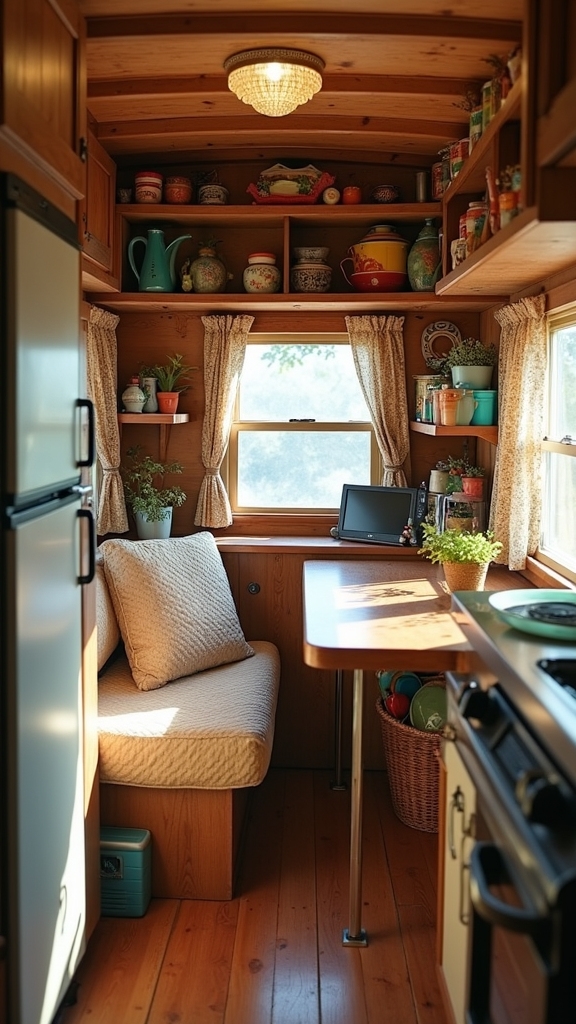
Don’t overlook valuable storage opportunities in your tiny camper’s corners, under-seat areas, and vertical spaces. Install wall-mounted shelves, utilize flip-up benches, and incorporate hidden compartments in furniture.
Consider using removable containers and foldable storage systems to maximize every inch of available space.
Choosing Improper Lighting Temperature

Lighting temperature plays an essential role in creating the perfect ambiance within your tiny camper’s living space.
You’ll want to match specific color temperatures to different areas: warm lights (2700-3000K) for bedrooms and lounging spaces, cool whites (4000K+) for kitchen tasks, and neutral temperatures for common areas.
Installing Insufficient Ventilation Systems
You’ll regret skimping on this essential feature when condensation starts dripping from your walls and mold begins to grow.
Don’t rely solely on passive vents; invest in a combination of roof and side vents, along with an active fan system, to guarantee proper air circulation.
My final reminder…
Just as a master chef arranges ingredients thoughtfully in a small kitchen, you’ll need to carefully orchestrate your tiny camper’s design elements.
By avoiding these common decorating pitfalls, you’re creating a space that’s both functional and inviting. Remember, every square inch counts in your mobile sanctuary.
When you respect the unique challenges of compact living, you’ll transform your tiny camper into an efficient, comfortable home on wheels.
